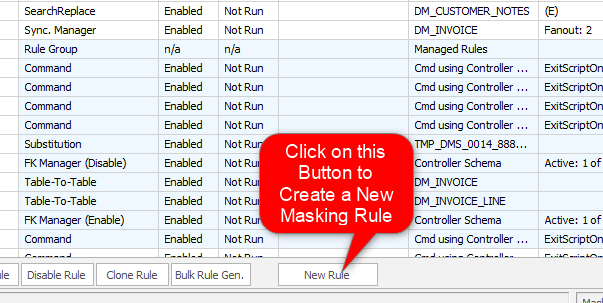About Rule Controllers
Published 19 March 2018
The function of a Rule Controller is to define the server, database and login information on which a collection of dependent Masking Rules will operate. Without a Rule Controller, the masking rules would have no knowledge of, or ability to connect to, any SQL Server or Oracle database. Consequently, a viable masking set always requires at least one Rule Controller and can contain more than one. Masking rules must always have a parent Rule Controller.
Rule Controllers are independent of each other. If there are multiple Rule Controllers defined for a masking set, each Rule Controller can be configured to connect to the same database or entirely different ones.
The Data Masker software is multi-threaded and can run up to 16 rules in parallel. It is common to have a situation in which certain rules cannot run simultaneously and must run sequentially one after the other as a chain. The execution order of the masking rules is controlled through the use of rules blocks and dependencies. Please see the Rule Blocks and Dependencies help page to understand how to explicitly control the execution order of the masking rules. Note that Rule Controllers themselves can have a designated rule block. A Rule Controller and all rules under it will finish execution before the next Rule Controller is run. A Rule Controller (and hence its dependent masking rules) with a lower rule block will always be run before a Rule Controller with a higher rule block. Two Rule Controllers with the same rule block may run in arbitrary order.
A Rule Controller is automatically created when a new masking set is built using the New Masking Set wizard. Additional Rule Controllers can be created by launching the New Rule Controller form using the New Rule button located on the bottom of the Rules in Set tab.
How to create an additional Rule Controller





